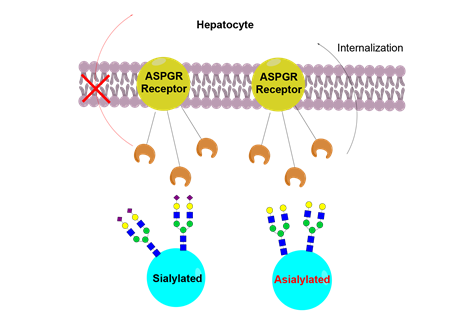Sialic acids are a diverse family of carbohydrates widely distributed in human tissues and specifically present in both N- and O-linked glycans, where they constitute the terminal residue of the oligosaccharides on glycoproteins. Sialylation is important to a protein´s function and its physical and pharmacokinetic properties, and the ability to monitor the degree of sialylation is important in the development of proteinbased drugs.
Novo Nordisk produces a drug based on a glycoprotein called Recombinant Activated Factor VII (rFVIIa), better known as Novo-Seven®, taken by patients with haemophilia or other coagulation deficiencies. In adults, the pharmacokinetics of rFVIIa is directly dependent on the number of attached sialic acids. rFVIIa is isolated as a mixture of compounds with different degrees of sialylation and no further purification is performed. The aim of this project was the development of small organic molecules able to selectively recognize sialic acid and suitable to be incorporated into a chromatographic purification system.
The first methodology explored was dynamic combinatorial chemistry. Dynamic combinatorial libraries of potential receptors were generated using reversible disulfide bonds to connect building blocks under thermodynamic control. When the target is added, the distribution of the species in the library changes leading to an amplification of effective receptors. The amplified receptors were isolated and the binding studied both qualitatively and quantitatively using 1H-NMR spectroscopy and a UV spectroscopy indicator displacement assay.
The second approach was combinatorial chemistry. Synthetic methodology was developed for the highthroughput solid phase synthesis of cyclic peptides. Three cyclic peptides libraries were synthesized. Among the three different high-throughput methods of analysis that were tested, a competitive direct ELISA assay was selected as the most suitable and reliable. The three libraries were analyzed and four potential receptors were found.

Mechanism of action of ASPG receptor. Asialoglycoprotein receptors in the liver are able to recognize only non sialylated serum protein. Thus, sialylated protein are protected from uptake and degradation.